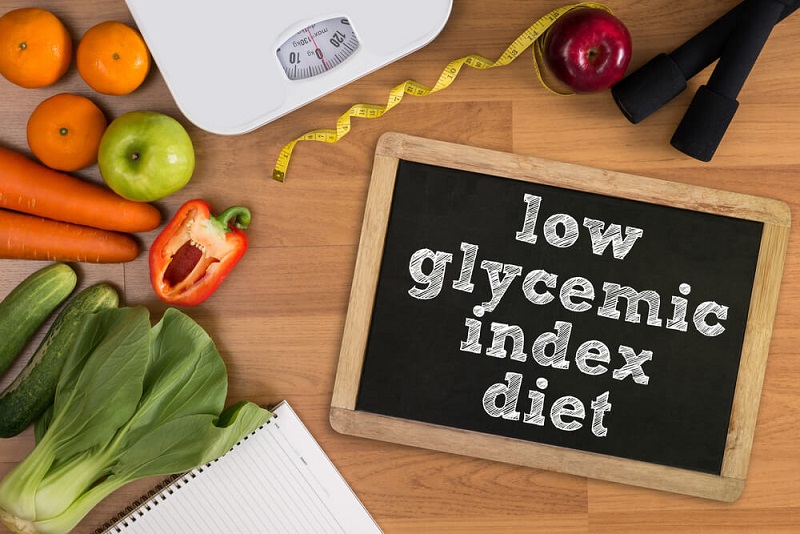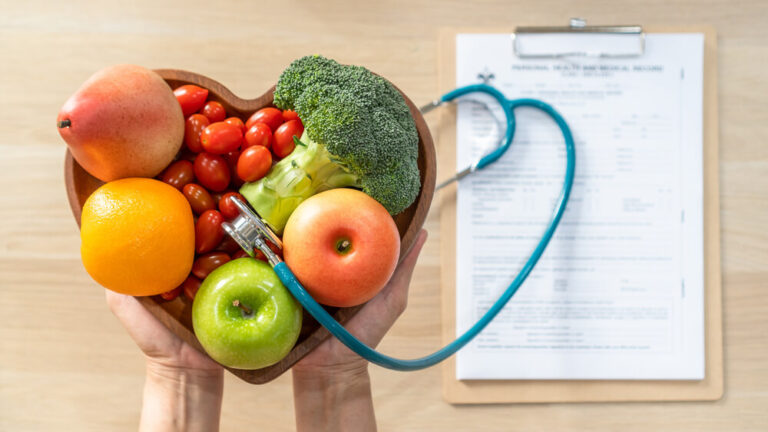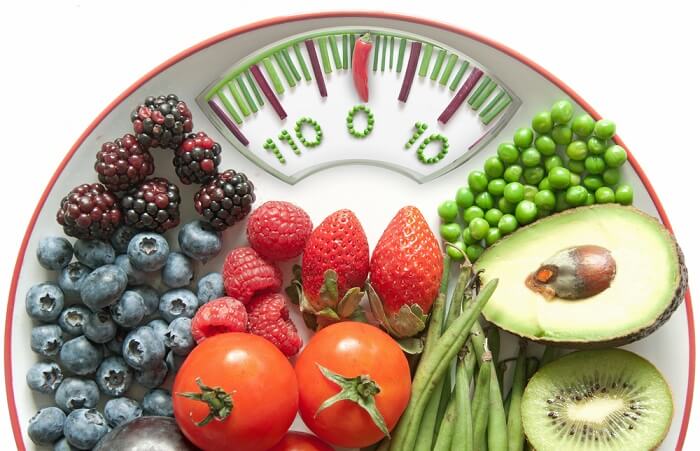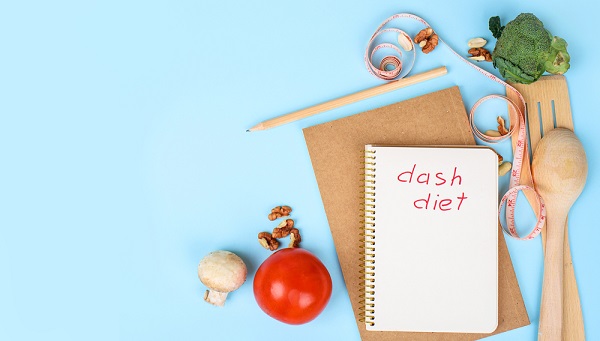How Do Low GI Foods Affect Your Body
Low GI foods reduce endothelial dysfunction, inflammation, and free fatty acid levels, which significantly reduces cardiovascular risk factors. They also reduce insulin resistance and plasma glucose levels. Low GI foods take longer to digest, they may also postpone the reemergence of hunger. Another potential way that low GI foods may help lower the risk of metabolic syndrome is through weight loss. (1)
The glycemic index, also known as the GI, is a numerical number that accurately predicts how quickly the body will break down, absorb, and process carbohydrates. The insulin reaction to a food is not always directly proportionate to this, though.
When our blood sugar levels rise, our pancreas secretes the hormone insulin, which moves the glucose from our bloodstream and into our cells, where it can be used as an immediate source of energy or stored as glycogen, into our body’s cells. To help them be utilized, some foods require more insulin than others. (2) Additionally, the definition of the GI states that foods with a low GI (70) are believed to be beneficial for health, notably for the prevention of obesity and type 2 diabetes.
Different Between Low GI Foods & High GI Foods
Blood sugar levels jump quickly after eating foods with a high GI. Low GI foods require more time for the body to digest, which results in more stable blood sugar levels. Consuming a lot of high GI meals may increase a person’s risk for type 2 diabetes as well as other health issues including heart disease and being overweight.
How Do You Define GI Of A Food
There are different factors that come into place.
The kind of sugar that is present in the food is the main factor. It is believed that all sugars have a high GI. Fructose has a GI of only 23, while maltose has a GI of up to 105. As a result, the type of sugar a food contains influences its GI to some extent.
The starch’s structure is the second factor. Amylose and amylopectin, two components that make up starch, are carbohydrates. Amylopectin is simple to digest compared to amylose, which requires more effort. Higher amylose content foods will have a lower GI. (3)
A food’s GI increases the more processed it is. The GI increases when amylose and amylopectin molecules are broken up during processing techniques like grinding and rolling.
Meals with protein or fat can help meals digest more slowly and have a lower glycemic response.
Techniques used in preparation and cooking can also impact the GI. Generally speaking, the higher the GI, the faster a food’s sugars will be absorbed and processed.
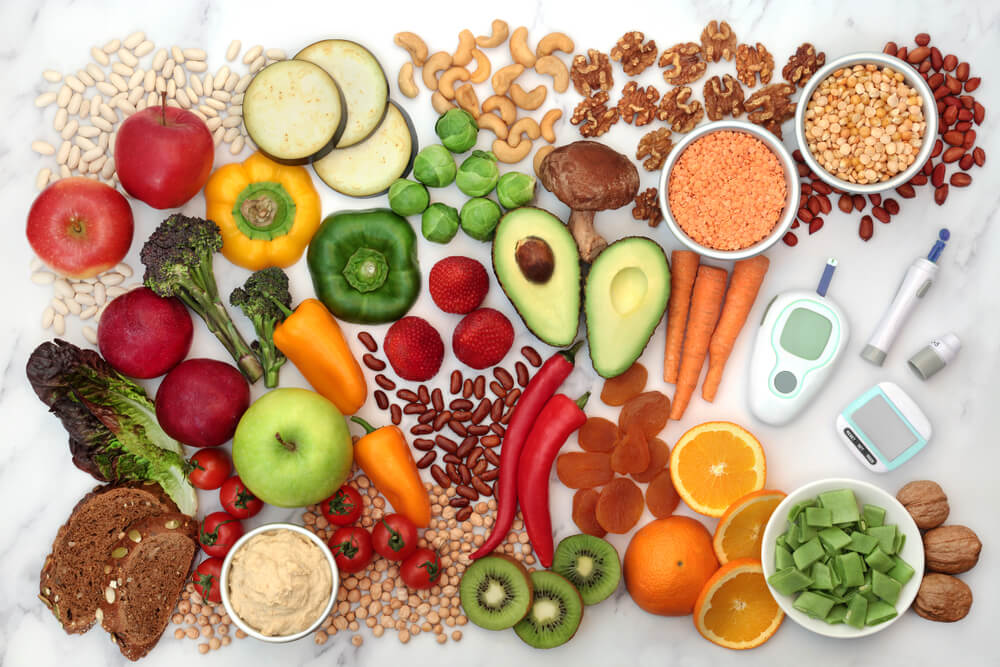
What are the best low GI foods?
This is a list of low GI foods for diabetics and those seeking to lose weight.
| Grains and Starches (Low GI Carbs) | Low GI Fruits | Milk And Other Beverages | Meat |
| Breads: Heavy Mixed Grain Breads Spelt Bread Sourdough Bread Tortilla (Whole Grain) Cereal: All-Bran Cereal Oat Bran Oats (Steel Cut) Grains: Barley Bulgur Pasta (Al Dente, Firm) Pulse Flours Quinoa Rice (Converted, Parboiled) Other: Peas Popcorn Sweet Potato Winter Squash | Apple Apricot (Fresh, Dried) Banana (Green, Unripe) Berries Cantaloupe Grapefruit Honeydew Melon Mango Orange Peach Pear Plum Pomegranate Prunes | Almond Milk Cow Milk (Skim, 1%, 2%, Whole) Frozen Yogurt Greek Yogurt Soy Milk Yogurt (Skim, 1%, 2%, Whole) | Baked Beans Chickpeas Kidney Beans Lentils Mung Beans Romano Beans Soybeans/Edamame Split Peas |
low glycemic index diet
The table above is a sample of the low GI foods that can be part of a low GI diet. Foods to eat on a low glycemic diet include:
- high protein foods, such as lean meat and fish
- dairy products, such as milk and natural yogurt
- unsweetened soy milk
- vegetables, such as broccoli, green peas, and leafy greens
- low-sugar fruits, such as apples, oranges
- porridge made with steel-cut oats and water
- legumes, pulses, and beans such as chickpeas, lentils, and kidney beans
Common Questions Being Asked
Are eggs Low GI?
The glycemic index of an egg is 0. Eggs are noted for having a low glycemic index and are a great source of many important nutrients. However, you won’t find them on a typical list or chart of foods with a high glycemic index.
What are low GI snacks?
- Unsalted nuts.
- Carrot sticks with hummus.
- Greek yogurt with sliced almonds.
- Apple slices with almond butter or peanut butter.
Low GI Foods & Diet Side Effects
Low blood sugar levels can also cause a variety of problems within your central nervous system. Early symptoms include weakness, lightheadedness, and dizziness. Headaches can occur from a lack of glucose, especially if you have diabetes. You may also feel signs of stress, such as nervousness, anxiety, and irritability.
In conclusion following a low-GI diet consistently over time may result in positive metabolic consequences. Weight loss requires eating a diet rich in fruits, vegetables, whole grains, and low-fat dairy products. Through its effects on oxidative stress, blood pressure, serum lipids, coagulation factors, inflammatory mediators, and dissolve blood clots, reduced the amount of insulin in your blood associated with a low-GI diet may reduce the risk of cardiovascular disease. (5)

